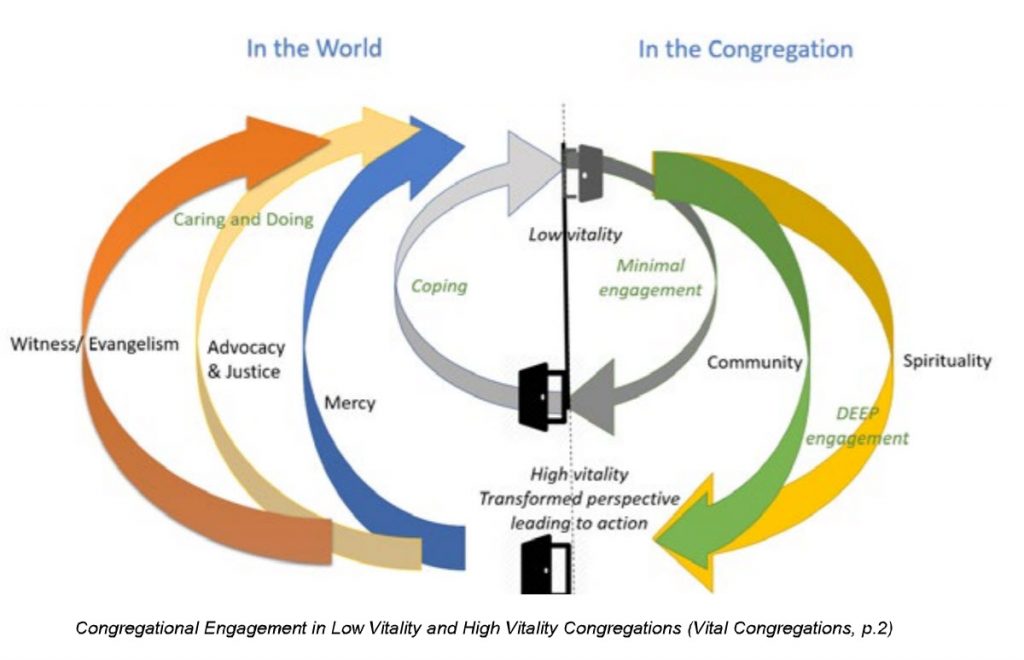Is spiritual vitality the same across denominations and even religions or does it look differently within each of these contexts?
Common Ground
According to the Faith Communities Today American Congregations 2018 report titled Vital Congregations, there is significant overlap in what makes a faith community a spiritually vital congregation.
Authored by Linda Bobbitt, creator and manager of the Congregational Vitality Project, this new research builds on the Faith Communities Today American Congregations 2015 report authored by David A. Roozen titled Thriving and Surviving.
Shared Definition
The 2018 effort involved interviews with congregational leaders and denominational leaders/experts representing select medium or high vitality congregations from the 2015 research. Included are ten traditions: Baha’i , Church of the Nazarene (NAZ), Evangelical Lutheran Church in America (ELCA), Jewish, Latter-Day Saints, Orthodox Christian, Presbyterian Church USA (PCUSA), Quaker/Friends, United Church of Christ (UCC), and United Methodist Church (UMC).
The shared wisdom of these leaders suggests that “spiritually vital congregations are places where people come together for a common purpose of divine origin” (p.2).

So What?
Spiritual vitality within congregations leads those within the faith community to engage in the work of transformation within and beyond their congregations:
Respondents further agreed that in spiritually vital congregations, people experience the divine in ways that are transformative. The common divine purpose and transformative experience compel the people to authentically engage both within the congregation and the world around them (p.2)
People in these congregations are likely to see the work they do in all areas of life as partnering with the divine for the transformation of the world.
Think about your congregation
- Would you describe it as spiritually vital? Why or why not?
- Has your congregation become more or less vital during the time you’ve been a part of it? What do you believe to be some of the factors that led to this shift? (See pages 4-5 of Vital Congregations for some of the more common factors associated with becoming more or less vital.)
- If you have ever participated in a spiritually vital congregation how did that experience (or how do those experiences) impact the way you understand and live out your faith today?